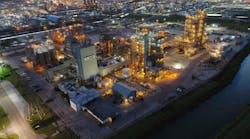Knowledge usually helps you make progress, but often too much information can get you in trouble. Sometimes both can happen. Let me explain.
Coriolis flowmeter technology was included in a flowmeter study performed in the early 1980s. Performing that study entailed my speaking with engineers who worked for the one Coriolis flowmeter manufacturer at the time. Specifications and conversations focused on liquid applications, but during the conversations, one engineer mentioned that Coriolis flowmeters could also be used for gases as well. Gas applications were not included in the study because there were no specifications (or other information) available.
In the mid-1980s, plant personnel identified a gaseous ammonia flowmeter in gaseous ammonia service (specific gravity of approximately 0.6) that was not accurate and needed to be upgraded to improve flowmeter performance. The design pressure was approximately 4 bar gauge, but the operating pressure could vary due to actual equipment operating conditions.
One option to improve measurement accuracy was to compensate the raw vortex-shedding flowmeter measurement for the actual operating pressure and temperature and correct for the changing operating density. However, installing the necessary transmitters and flow computer was relatively complicated and somewhat expensive at the time.
My recollection that Coriolis flowmeters could be used in gas service led me to call the Coriolis flowmeter engineer. The eloquence of measuring mass flow directly (instead of inferring mass flow from velocity, pressure and temperature) needed to be considered in light of the engineer’s concern that the operating density was relatively low. After investigation, the engineer said that a Coriolis flowmeter would work in this application regardless of the fact that there were no specifications or other literature available for gas applications.
The decision was made to install a Coriolis flowmeter. We’ll consider the results next month.
NEXT ARTICLE: Strike 1!—Specifying a Coriolis flowmeter for gas service
David W. Spitzer is a regular contributor to Flow Control magazine and a principal in Spitzer and Boyes, LLC offering engineering, seminars, strategic marketing consulting, distribution consulting and expert witness services for manufacturing and automation companies. He has more than 35 years of experience and has written over 10 books and 250 articles about flow measurement, instrumentation and process control.
Mr. Spitzer can be reached at 845 623-1830 or ?www.spitzerandboyes.com. Click on the “Products” tab to find his “Consumer Guides” to various flow and level measurement technologies.



